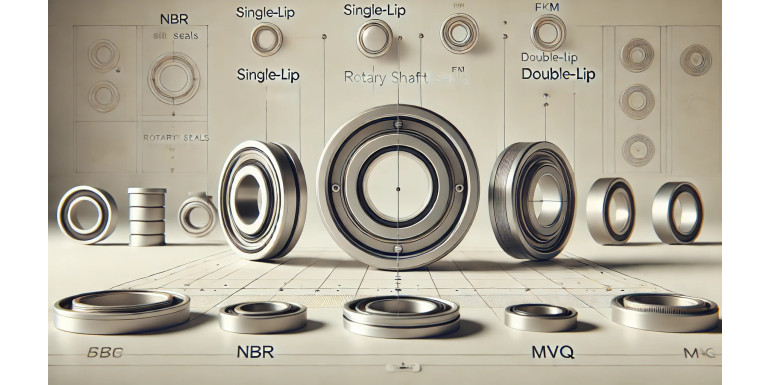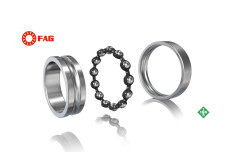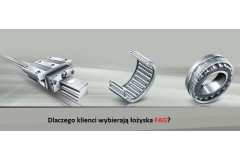
What are Simmering Seals and What Functions Do They Serve?
Simmering seals, also known as rotary shaft seals, play a vital role in ensuring the integrity of various machines and equipment. Their primary function is to prevent the leakage of fluids, such as oils, lubricants, or other liquids used in mechanical systems, while also protecting the machinery from external contaminants like dust, dirt, water, and other environmental factors. Simmering seals are typically installed at points where a rotating shaft passes through a housing, maintaining a sealed system.
Types of Simmering Seals: Single and Double Lip Seals
Single Lip Simmering – Simplicity and Functionality
Single lip simmering seals are the most basic form of rotary shaft seals. They consist of a single sealing lip that retains fluid within the mechanism, preventing leaks. This type of seal works best in applications where the machinery is not exposed to significant external contaminants like dust or dirt.
Advantages:
- Simple construction.
- Lower friction resistance.
- Lower production costs.
Disadvantages:
- Lacks additional protection against contaminants, limiting its use in harsher environments.
Double Lip Simmering – Enhanced Protection Against Contaminants
Double lip simmering seals feature an additional protective lip that prevents external contaminants from entering the equipment. This design makes double lip simmering seals more suitable for harsh working environments, such as those exposed to dust, moisture, and other external factors.
Advantages:
- Effective protection against contaminants.
- Greater durability in demanding conditions.
Disadvantages:
- Higher friction than single lip seals.
- Increased cost due to the more complex design.
Applications of Simmering Seals in Various Industries
Simmering seals are widely used across various industries, where precise sealing and protection from contaminants are essential. Here are some typical applications:
- Automotive Industry: Sealing solutions for engines, gearboxes, driveshafts, and suspensions.
- Machinery Industry: Used in production machines, pumps, compressors, and household appliances like washing machines and dishwashers.
- Energy Sector: Simmering seals protect rotating shafts in turbines, generators, and other energy-related equipment, ensuring reliability.
Materials Used in the Production of Simmering Seals
Simmering seals can be made from various materials, each offering specific resistance to environmental and technical factors:
NBR (Nitrile Butadiene Rubber)
- Temperature Range: -40°C to +120°C.
- Advantages: Excellent resistance to oils, lubricants, and hydraulic fluids. It is the most commonly used material for standard industrial and automotive applications.
- Disadvantages: Limited resistance to ozone and UV radiation, making it less suitable for outdoor use.
FKM/FPM (Fluorocarbon Rubber)
- Temperature Range: -20°C to +200°C.
- Advantages: Exceptional resistance to chemicals, oils, fuels, and high temperatures. Ideal for applications requiring high durability in extreme environments.
- Disadvantages: Higher production cost, which impacts the final price of the seals.
MVQ (Silicone Rubber)
- Temperature Range: -60°C to +180°C.
- Advantages: Excellent flexibility in very low temperatures and good resistance to ozone and atmospheric conditions.
- Disadvantages: Weaker resistance to oils and lubricants compared to NBR and FKM.
Resistance of Simmering Seals to Wear and Environmental Conditions
Simmering seals must withstand various environmental challenges, including high temperatures, aggressive chemicals, friction, and wear. Selecting the right material for the seal is crucial for ensuring long-lasting effectiveness:
- Resistance to oils and lubricants: Simmering seals made from NBR are ideal for automotive applications where contact with oils and lubricants is frequent.
- Chemical resistance: FKM seals perform well in chemical environments where the seals are exposed to fuels, solvents, and acids.
- Wear resistance: Simmering seals with higher hardness (e.g., 90 ShA) exhibit better wear resistance, which is important in applications involving high rotational speeds.
How to Choose the Right Simmering Seal?
Selecting the right simmering seal depends on several key factors:
- Operating conditions: Consider the types of media the seal will come into contact with and the temperatures at which it will operate.
- Type of seal: If the equipment operates in a contaminated environment, a double lip simmering seal is a better choice.
- Material hardness: The hardness of simmering seals usually ranges from 70 to 90 ShA. Seals with higher hardness are more resistant to wear but may be less flexible.
For low-dust environments and moderate rotational speeds, single lip simmering seals are sufficient. However, in more demanding conditions, double lip seals provide better protection.
By understanding these details, customers can make an informed decision when selecting the right simmering seal for their specific working conditions, improving the efficiency and lifespan of their equipment. Simmering.pl offers a wide range of simmering seals made from various materials, tailored to meet the needs of industrial and automotive applications.




Leave a Reply Cancel Reply